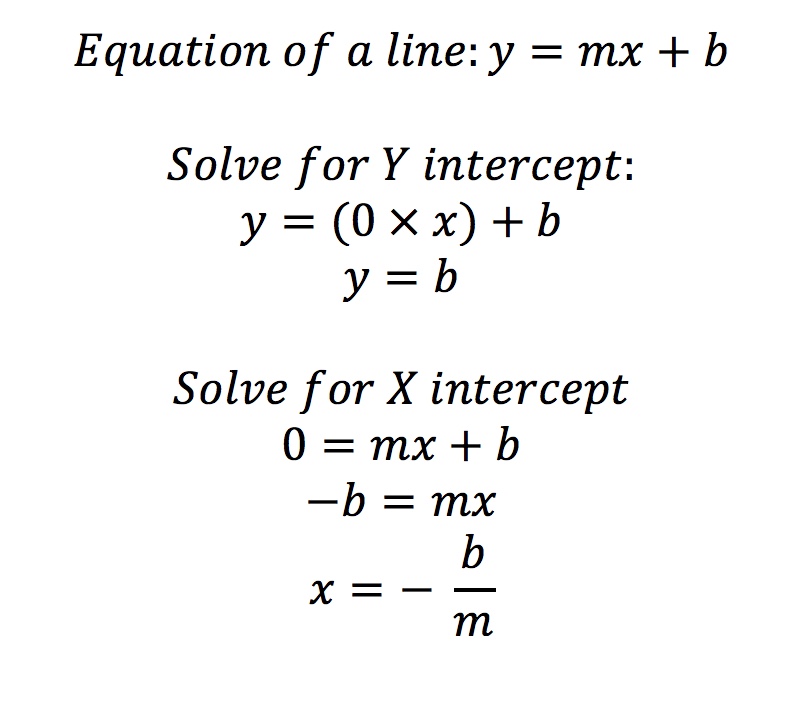A function can have multiple X intercepts, but can only have a single Y intercept. Why is only a single Y intercept allowed? By definition, a function can only have one output, y, for each unique input, x. Thus, a graph would violate this definition if ```x = 0``` produced more than one output, y.
To find the X intercept(s), set ```y = 0``` and solve the equation for x.
To find the Y intercept, set ```x = 0``` and solve the equation for y.
As an example, the X and Y intercepts have been solved for a typical line in the form ```y = mx + b```.
